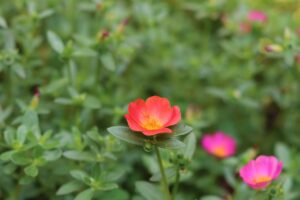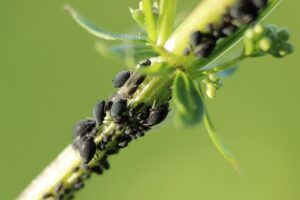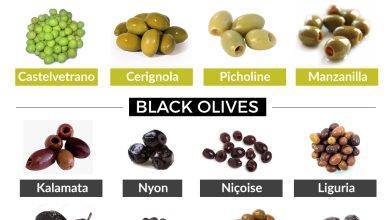Portulaca: [Crop, Irrigation, Associations, Pests and Diseases]

 Where to sow? It needs a lot of direct sunlight.
Where to sow? It needs a lot of direct sunlight.- When? In spring or early summer.
- How do we prepare the land? Removed, eliminating weeds . With substrate rich in nutrients with worm humus or compost.
- How do we water? With drip . Once or twice a week. The rest of the year waterings spaced and almost forgotten.
- Plagues and diseases? Aphid and diseases caused by excess water, generally fungi.
 The portulaca, also known as the silk flower , is a low plant with simple or compound flowers , of a color that covers the most diverse shades of yellow, red, pink and white.
The portulaca, also known as the silk flower , is a low plant with simple or compound flowers , of a color that covers the most diverse shades of yellow, red, pink and white.
Portulaca flowers, which can reach a size of up to 8 centimeters, only open in the presence of the sun.
There are between 100 and 150 different species and most of them share characteristics. However, there are genera that present differences to the naked eye, and others that are distinguished by the color of their flowers.
The use of portulaca is generally ornamental , but there are some highly valued varieties in the culinary tradition of different areas of the world. In general, they all develop especially tropical and subtropical areas .
The two most well-known types of portulaca are the oleracea –also known as purslane– whose flowers are yellow and their size is slightly higher in height, and can reach 40 centimeters. The other variety and the most popular is the portulaca grandiflora, which is the most appreciated for its variety of colors.
When to plant the Portulaca?
Where to do it?
 The portulaca is a true lover of the sun. If you give it a place sheltered from the rain and the wind, it will have a healthy development.
The portulaca is a true lover of the sun. If you give it a place sheltered from the rain and the wind, it will have a healthy development.
And you will have a plant of floral exuberance from summer to early fall . So it is not suitable for the interior of a house and does not support low temperatures or shady areas.
How to prepare the land?
It is recommended to try not to use cheap substrates that contain a large amount of salt and have an inconvenient behavior when draining the water from the portulaca.
How do we water the Portulaca?
 The portulaca does not resist winter . If there is any carelessness with the irrigation they do not react negatively since their fleshy leaves can accumulate water for a long time.
The portulaca does not resist winter . If there is any carelessness with the irrigation they do not react negatively since their fleshy leaves can accumulate water for a long time.
A regular watering guarantees the abundance of its flowers. Experts say that the great enemy of the portulaca is water.
It prefers dry climates and little or not at all humid. Too much water can be fatal to the portulaca or, at the very least.
How do we plant a Portulaca step by step?
 The sowing of the portulaca does not require special care so anyone interested in gardening can cultivate it.
The sowing of the portulaca does not require special care so anyone interested in gardening can cultivate it.
The portulaca is a succulent so it is propagated simply by cutting a piece and placing it in moist soil or a glass of water.
The plant can be propagated in 2 ways: By spreading its seeds or by cutting the stems. Seeds take approximately 10 days to germinate when exposed to temperatures ranging from 70 ° to 90 ° Fahrenheit (21 ° and 32 ° C).
Recommendations for sowing portulaca step by step in any closed space:
- Acquire seeds or cuttings . Portulaca seeds can usually be obtained from disseminated plants, but they can also be purchased from nurseries. When collecting portulaca seeds, it should be taken into account that the plants have not been sprayed with pesticides or herbicides.
- Fill a pot with abundant soil. You can also add some soil from a compost bin as fertilizer.
- Plant the seeds by spreading them on the ground, but they should not be covered. Seeds need light to germinate and take root.
- Water the soil until it is damp. Avoid watering the soil to the point that it is excessively soggy. Seeds only need a limited amount of water to germinate.
- If cuttings are used for cultivation, they should be sown in the ground. Typically, it takes a few days for the cuttings to take root.
What favorable associations does it have?
What pests and diseases attack the Portulaca?
 The portulaca can be attacked by pests such as aphids , which if installed on the plant can cause serious damage. .
The portulaca can be attacked by pests such as aphids , which if installed on the plant can cause serious damage. .
Also, excess humidity can cause fungal diseases, although it is not very frequent.

![Photo of Prune Dahlias: [Importance, Time, Tools, Considerations and Steps]](https://www.complete-gardening.com/wp-content/uploads/2022/08/prune-dahlias-importance-time-tools-considerations-and-steps-390x220.jpg)

![Photo of Adiantum: [Cultivation, Substrate, Irrigation, Care, Pests and Diseases]](https://www.complete-gardening.com/wp-content/uploads/2022/08/adiantum-cultivation-substrate-irrigation-care-pests-and-diseases-390x220.jpg)
